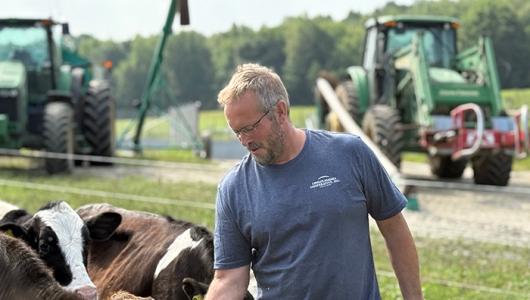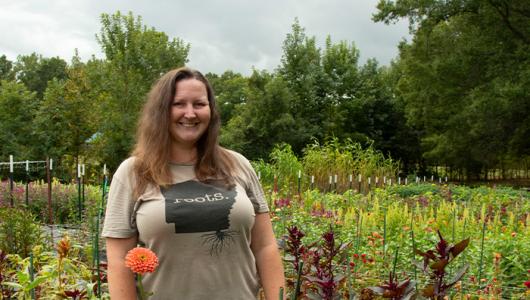Archived Content
This blog was published more than three years ago and is considered archived. It is not actively updated and may not reflect current policies or practices. However, some of the content may still be useful.
It’s a chilly morning to be on a boat off the Oregon coast. Sea spray clings to the beards of Nick Puhl and his father. It’s perhaps an odd place to find a pair of cranberry farmers in the middle of the growing season, but they’ve chosen to take a much deserved fishing trip away from the constant demands of the family farm in Cape Blanco. It’s been months since they’ve had this kind of time, but it’s not as if all the work has stopped back on the farm. It’s time for their 75 acres of cranberry beds to be watered. Nick pulls a smartphone from his pocket, and with a few swipes, irrigation pumps located several miles inland rumble to life and sprinkle water onto his crops.
Automated sprinklers mean Nick’s cranberries always get water when they need it, but never when they don’t. They also save time, so he can be more productive on and off the farm and spend more time with family.
In Pinedale, Wyoming, sagebrush rolls across the wide-open horizon, stretching from the flanks of the Wind River Mountains down to the mighty Green River. Mike Fenn steps out of his red Chevy pickup with a smile on his face. The sun is rising and his wetlands are teaming with life. “We like wildlife,” Mike says cheerfully. “It's kind of a priority for us on the ranch. We raise cows, but we try to do whatever we can for wildlife.” Thanks to help from the Sage Grouse Initiative, Mike says that he's been able to “grow better and more nutritious grass” to feed his livestock too. A conservation easement helps protects vital sagebrush habitat and his ranchland from the threat of subdivision. “As a family, we wanted to leave a little bit of a legacy, something that would be there forever,” explains Mike, pointing out at his green pastures in front of snow-capped mountains. “We enjoy the outdoors and open space and wildlife – being able to preserve a piece of that is important to us.
As an avid outdoorsman who likes to hunt and fish, Mike believes in land management practices that boost his agricultural bottom line as well as the fish and wildlife he enjoys seeing on his property. Watch the video.
Plunging a shovel into his northern Oklahoma wheat field, covered in soybean residue, Gary Hula hefts up a mound of crumbly soil with a grin. The county is under moderate drought and it’s just above freezing outside, but the soil in his shovel is full of moisture and riddled with worm holes — sure signs of healthy soil. “When I was growing up, we plowed every acre,” he recalls. “Before we went to no-till, we worked the ground too much. It was so dusty, you couldn’t see to plant a row of wheat,” said Hula. “The soil was like flour, it would just pile up in front of the tractor tires.”
Unlike many farmers who sell their old plow when they switch to no-till, Hula kept his. It sits rusting next to his new no-till drill. “My father made his living breaking horses to pull a plow,” he adds. “I keep the old disc around to remind me of what I used to do.”
Gary Hula says he’s “not going to turn another clod.” After four years of planting without a plow, Hula’s soils are unrecognizable — armored by crop residue and full of life.
This summer, the benefits of conservation are here to stay!
Whether you’re aiming for improved water quality or healthy soil – or perhaps both – we’ve got you covered. The fact is, a little conservation goes a long way. It can save a lot of heartache, stress AND time. We here at USDA want to help you enjoy all the benefits that conservation has to offer.
At the Natural Resources Conservation Service, we have a highly trained workforce of 10,000-plus employees, located in local USDA service centers throughout the country, ready to help you help your land.
We know every farm and acre is unique and requires tailored management, and that every decision maker has different management concerns and needs. That’s why our technical assistance is one-on-one, personalized advice and support to help you make the best decisions for your lands — and is offered free of charge.
We combine the assistance with a suite of financial assistance programs to help producers and communities make targeted conservation investments to help keep their working lands healthy and productive.
Working together, we’ll help you, and the valuable resources you manage, stay on your farm for generations to come. So don’t pack a thing this summer. Bring the vacation to you by creating your summer escape with conservation that enhances your natural resources AND beautifies your land for the perfect #ConservationStaycation.
Visit the NRCS website to find out how voluntary conservation programs can benefit the natural resources on your operation.


